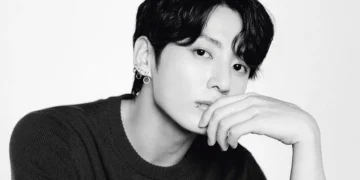
Tattooing has transformed from ancient cultural practices into a globally celebrated modern art form. This evolution reflects a rich history, intricate culture, and deep personal expression. Today, tattoos are not just ink on the skin, they are elaborate designs that tell stories, represent beliefs, and showcase the artistic skill of tattoo artists.
The Historical Evolution of Tattoo Art
Tattooing dates back thousands of years, with evidence found on mummies and ancient artifacts. Throughout history, tattoos have served various purposes in different cultures, such as religious symbols, protective marks, identifiers, and rites of passage.
For example, Polynesian tattoo designs are famous for their geometric designs, each telling a story about the individual’s family background, accomplishments, and social status. Similarly, Traditional Japanese irezumi tattoos, featuring mythological and naturalistic motifs, carry significant cultural meaning and serve as elaborate body adornments.
Tattooing became more sophisticated in the 19th century with the invention of the electric tattoo machine by Samuel O’Reilly. This advancement allowed for more precise and intricate patterns, propelling tattooing into a widely accepted and respected art form. Today, tattoo artists are recognized as true artists.
This intersection of design and tattooing is vividly exemplified by establishments like the Tattoo Bern Studio, where creativity and precision meet.

Design Principles in Tattoo Art
Tattooing is a form of art where the canvas is the human body. This requires not only a deep understanding of artistic principles but also knowledge of the body’s structure and movement. A well-placed tattoo must complement the body and enhance its natural form.
Symmetry and Balance
Symmetry and balance are the primary and most relevant concepts when creating a tattoo. A good tattoo design can also be defined as one that can easily be bisected vertically; its two halves on the opposite sides of the central vertical axis should look good. Symmetrical patterns are often used in artworks since they constitute a primary form of arranging balance that proves valuable when creating large, intricate designs.
Importance of Symmetry
Symmetry and balance are crucial in tattoo design. A well-designed tattoo should be visually balanced, often achieved through symmetrical patterns. These designs are aesthetically pleasing and suggest harmony and order, which are particularly important in complex tattoos.
Examples of Symmetrical Designs
Mandala tattoos, for example, rely heavily on symmetry, with intricate details radiating from a central point, creating a harmonious and balanced look. Tribal tattoos also use symmetry to create dynamic designs that flow naturally with the body’s contours.
Achieving Balance in Tattoos
While symmetry is essential, achieving balance in tattoo design goes beyond just mirroring elements. Balance involves the placement of the design on the body, the relationship between the tattoo and the surrounding skin, and the distribution of visual weight. A well-balanced tattoo should complement the natural form of the body without distorting it. Tattoo artists must skillfully harmonize all components of the design, ensuring that each element works together to create a cohesive and aesthetically pleasing piece, regardless of its position on the body.

Line Work and Shading
Line work and shading are fundamental techniques in tattoo art. Sharp, clear lines form the foundation of a tattoo, defining its shape and silhouette. Different line styles, from bold to delicate, create various effects and moods, ensuring the tattoo maintains its clarity over time. Shading adds depth and dimension, making tattoos appear more three-dimensional. It creates contrast, highlights key elements, and mimics shadows and light, enhancing the tattoo’s realism. Effective shading techniques allow smooth transitions between shades and colors, contributing to a cohesive and visually appealing design.
Line Work:
- Foundation of the Design: Establishes the basic structure and outline of the tattoo.
- Precision: Sharp and clear lines are crucial for maintaining the integrity of the tattoo over time.
- Style Variety: Different styles, such as thick, bold lines, or delicate fine lines, can be used to create different effects and moods.
- Longevity: Proper line work ensures the tattoo maintains its shape and clarity as it ages.
Shading:
- Depth and Dimension: Adds depth to the tattoo, making it appear more three-dimensional.
- Contrast: Helps create contrast within the design, highlighting key elements and focal points.
- Realism: Mimicking shadows and light sources to achieve a more realistic look.
- Texture: It can simulate textures, such as skin’s softness or scales’ roughness, enhancing the overall visual appeal.
- Smooth Transitions: Effective shading techniques allow smooth transitions between shades and colors, contributing to a cohesive and harmonious design.
Together, line work and shading are essential techniques that enable tattoo artists to create intricate and enduring pieces of body art.
Tattoos as Personal Expression
Tattooing is a deeply personal form of body art. Each tattoo reflects the wearer’s life, beliefs, and aspirations. The collaborative process between the artist and the client is akin to an architect working with a client, where the final design embodies the client’s vision and the artist’s expertise.
This personal connection makes each tattoo unique, transforming it from imagery to a meaningful narrative etched into the skin. The artist’s ability to understand and translate the client’s ideas into a tangible design that evokes personal emotions is what makes tattoos truly special.
Finally, tattooing is a complex and vibrant art form with a rich history and a promising future. From its ancient roots to its modern iterations, tattooing continues to evolve, reflecting the changing cultures and individual expressions of our time. As both a profession and an art form, tattooing remains a powerful medium for personal and artistic expression.



















